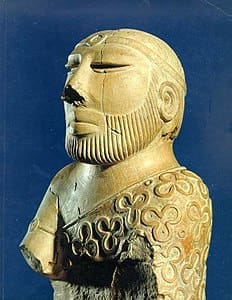The safeguarding of texture strands and cowhides takes into account experiences into the clothing of old social orders. The clothing utilized in the antiquated world reflects the innovations that these people groups aced. In numerous societies, dress demonstrated the economic wellbeing of different citizenry.
The advancement of clothing and design is an only human trademark and is a component of most human social orders. Apparel made of materials, for example, creature skins and vegetation was at first utilized by early people to shield their bodies from the components. The utilization of garments and materials over the ages mirrors the changing improvement of civic establishments and advances.

History of dress in the Indian subcontinent can be followed to the Indus Valley Civilization or prior. Indians have principally worn dress comprised of locally grown cotton. India was one of the main spots where cotton was developed and utilized even as ahead of schedule as 2500 BCE during the Harappan period. The sightings of the remainders of the old Indian garments can be found in the dolls found from the destinations close to the Indus Valley Civilisation, the stone cut sculptures, the cave works of art, and human artistic expressions. These dolls human are seen wearing garments which can be folded over the body. Turban was additionally in custom in certain networks.

The Vedic time frame was the time length somewhere in the range of 1500 and 500 BCE. The articles of clothing worn in the Vedic time frame primarily incorporated a solitary material folded over the entire body and hung over the shoulder. Individuals used to wear the lower article of clothing called paridhana which was creased in front and used to attach with a belt called mekhala and an upper piece of clothing called uttariya.

In the Mauryan tradition (322–185 BC) the most punctual proof of sewed female attire is accessible from the sculpture of Mother Goddess(from Mathura, third century BCE). Women in the Mauryan Empire regularly wore a weaved texture belt with drum headed bunches at the finishes. As an upper piece of clothing, individuals’ principle attire was uttariya, a long scarf. The distinction existed uniquely in the way of wearing. Now and again, its one end is tossed more than one shoulder and once in a while it is hung over both the shoulders.
In materials, for the most part cotton, silk, cloth, fleece, muslin, and so on are utilized as filaments with trimmings hooked on to an exceptional spot. A portion of the adornments had their particular names too. Satlari, chaulari, paklari were a portion of the accessories.

The Mughal tradition included extravagance garments that supplemented enthusiasm for craftsmanship and verse. The two people were partial to gems. Mughal regal dresses comprised of numerous parts as recorded beneath. The ladies during the mughal period wore an enormous assortment of decorations from head to toe. Their outfits commonly included Pajama, Churidar, Shalwar, Garara, and so forth they all included head trimmings, anklets, and pieces of jewelry. This was done as a particular sign of their thriving and their position in the public eye.
During the Mughal time frame, there was a broad convention of wearing weaved footwear.

During the British Colonial period, Indian attire, particularly among the aristocrats and instructed high societies, started to mirror a reasonable European impact. The sherwani evolved as a combination of the British frock coat. Garments went numerous progressions during the frontier time frame in India. This prompted change and furthermore clashes of standing among people groups. This happened when the Western-style dress became effective in India. The cap was likewise worn by the individuals of a few religions. This was not a direct result of insurance from the sun however indication of regard. A few Indians wore western dresses when they used to go out and changed at home with their customary dresses.

Western clothing has increased expanding notoriety, particularly in the metropolitan urban areas. This has likewise prompted the advancement of the Indo-Western style. Bollywood has additionally been a significant impact in design around the subcontinent, particularly in Indian style.
– by Anushka Dwivedi
picture credits-(google images)
References
- https://en.wikipedia.org/wiki/History_of_clothing_in_the_Indian_subcontinent
Follow Social Media to get Regular updates , Account details :
-
- Facebook : fashionvaluechain
- Instagram : fashionvaluechain
- Pinterest: fashionvaluechain
- Linkedin : fashionvaluechain
- twitter : fvcmedia

